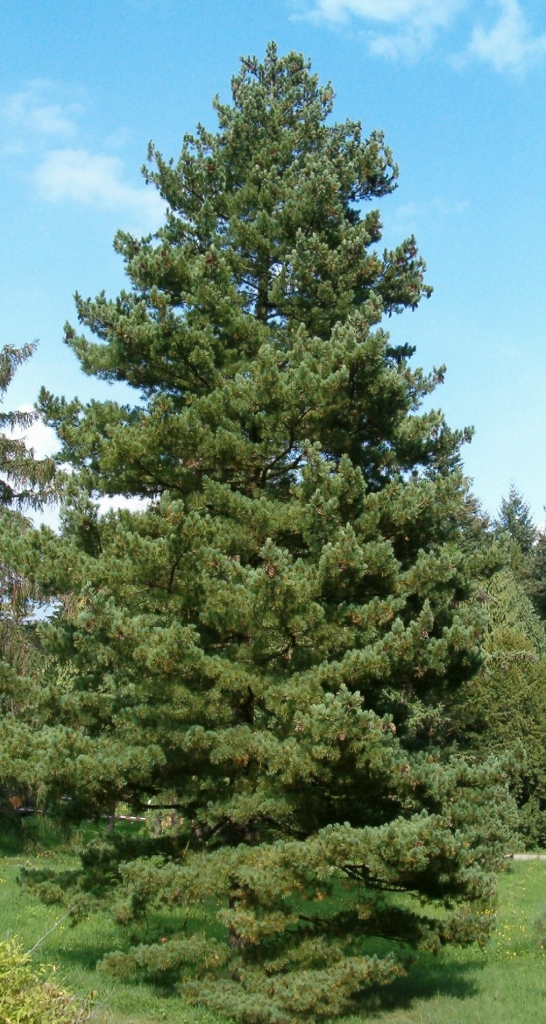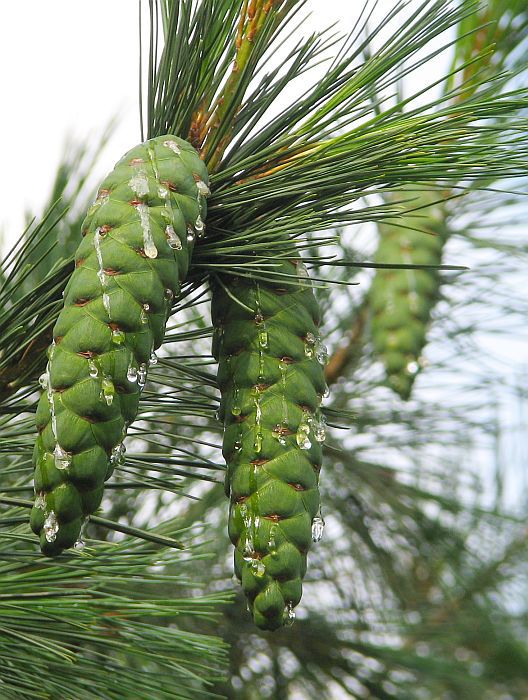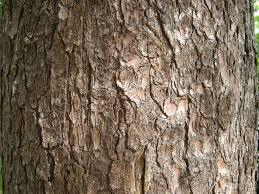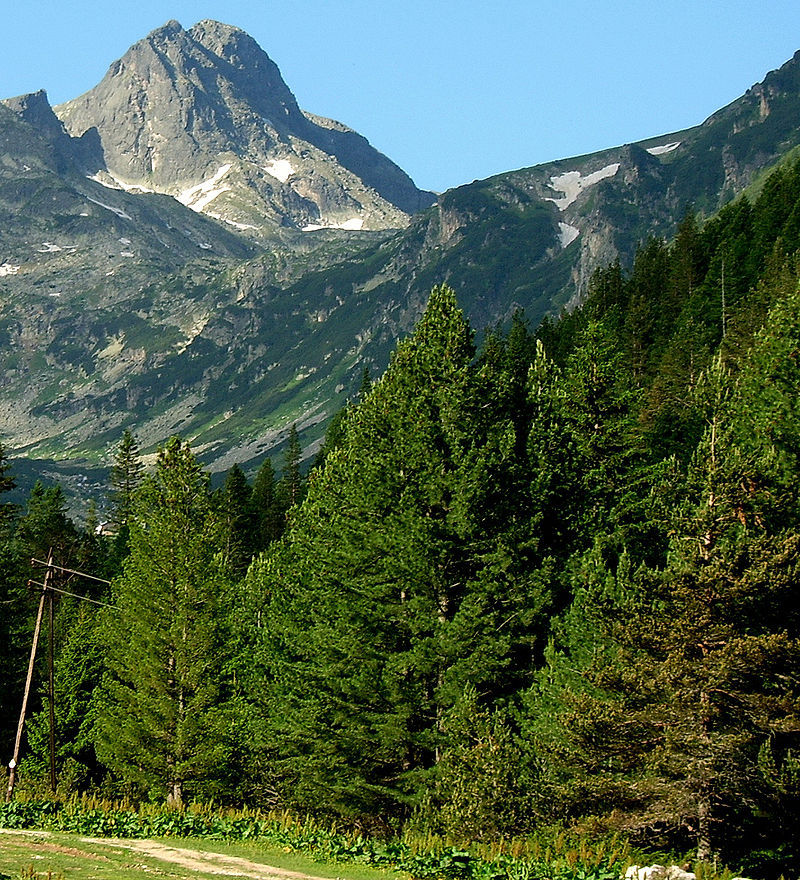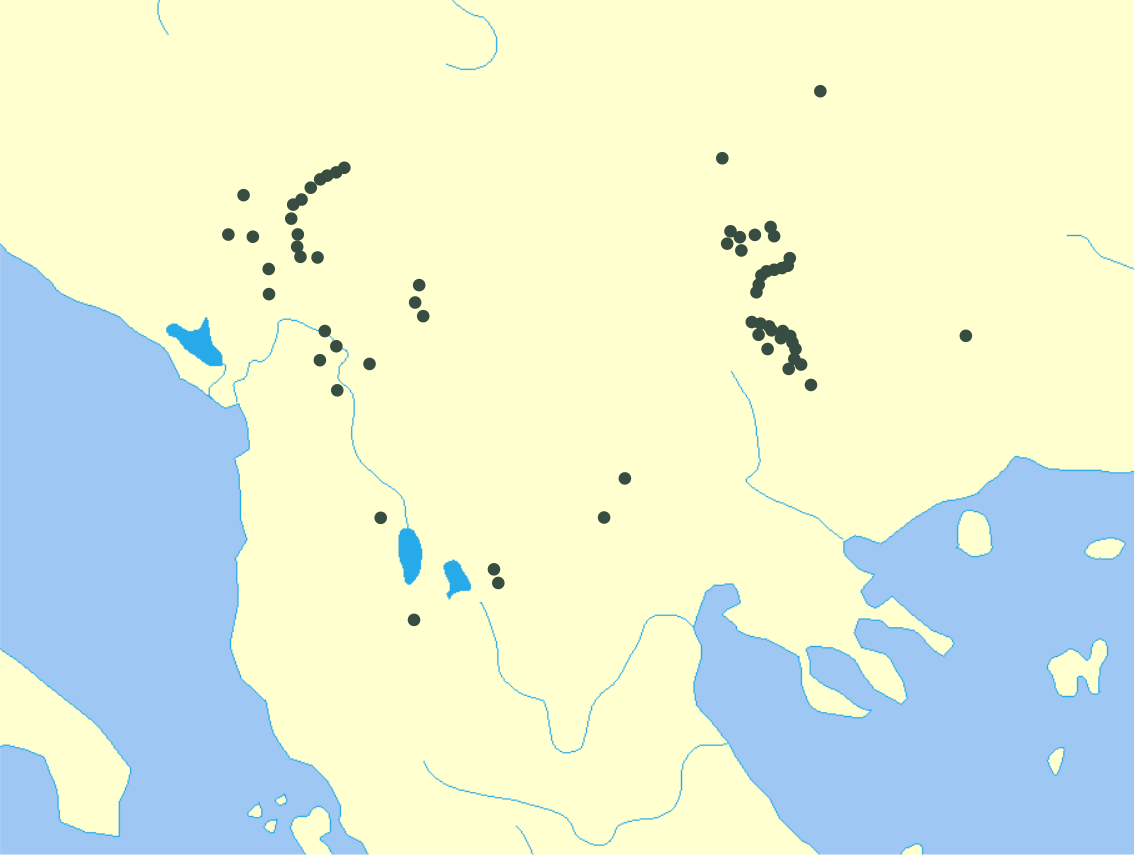subgenus Strobus (Lemmon), section Quinquefoliae (Duhamel), subsection Strobus (Loudon).
Pinus peuce, as described in 1846 by August Heinrich Rudolf Grisebach (1814-1879), in Spicilegium florae rumelicae et bithynicae, 2nd edition; is commonly known as Macedonian pine; as well as БÑла муÑ'а or Молика (byala mura or molika) in the Macedonian, Bulgarian and Serbian languages, as Βαλκανικό Ï'εÏκο (valkanikó péfko) in Greek, ÑоÑна БалканÑÐºÐ°Ñ (sosna Balkanskaya) in Russian, Mazedonische kiefer in German, pin des Balcans in French, and as pino dei Balcani in Italian. The species name, peuce, is derived from the Greek work for "pine."
Ethnobotany. This is one of the most valuable conifer species in the Balkan Peninsula. Its durable wood is highly valued in construction, furniture production, wood-carving and cooperage. The tree is also exceptionally good at adapting to severe mountain climate conditions, which makes it a valuable species for afforestation on high terrain for protection against erosion. The local population use P. peuce resin to cure wounds, pectoral, skin and stomach diseases, varicose veins and other illnesses.
Macedonian pine is also a popular ornamental tree in parks and large gardens, giving reliable steady though not fast growth on a wide range of sites. It is very tolerant of severe winter cold, hardy down to at least -50°F (-45°C), and also of wind exposure. It is locally naturalized the Punkaharju of eastern Finland.
Description. Macedonian pine is an evergreen, coniferous species of tree that grows to mature heights of 120 to 140 feet (35 - 40 m) with a trunk 20 to 60 inches (50 - 150 cm) in diameter, measured at breast height.
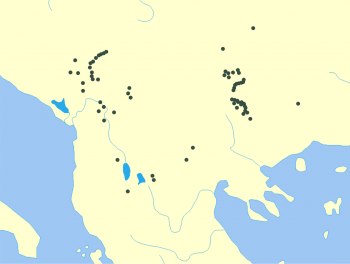
Distribution. This species is native to Balkan peninsula - Yugoslavia, Macedonia, western Bulgaria, northern Greece, and Albania, found growing at elevations of 2,000 to 7,200 feet (600 - 2,200 m) above sea level, usually on north slopes, on siliceous soils, rarely on carbonate soils.
Hardy to USDA Zone 5 - cold hardiness limit between -20° and -10°F (-28.8°C and -23.3°C) and performs its best when grown in a Mediterranean climate zone.
